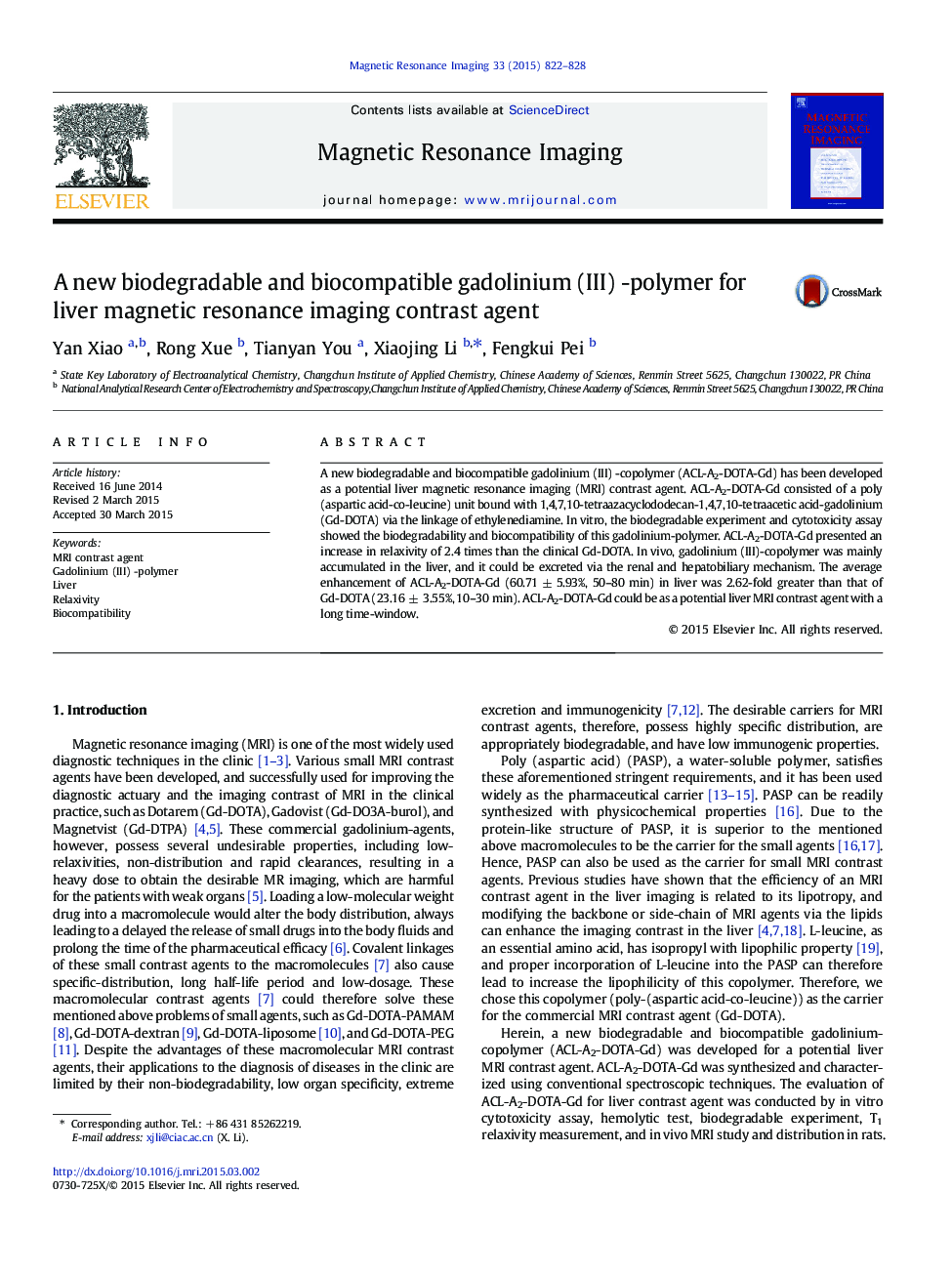| Article ID | Journal | Published Year | Pages | File Type |
|---|---|---|---|---|
| 10712564 | Magnetic Resonance Imaging | 2015 | 7 Pages |
Abstract
A new biodegradable and biocompatible gadolinium (III) -copolymer (ACL-A2-DOTA-Gd) has been developed as a potential liver magnetic resonance imaging (MRI) contrast agent. ACL-A2-DOTA-Gd consisted of a poly (aspartic acid-co-leucine) unit bound with 1,4,7,10-tetraazacyclododecan-1,4,7,10-tetraacetic acid-gadolinium (Gd-DOTA) via the linkage of ethylenediamine. In vitro, the biodegradable experiment and cytotoxicity assay showed the biodegradability and biocompatibility of this gadolinium-polymer. ACL-A2-DOTA-Gd presented an increase in relaxivity of 2.4 times than the clinical Gd-DOTA. In vivo, gadolinium (III)-copolymer was mainly accumulated in the liver, and it could be excreted via the renal and hepatobiliary mechanism. The average enhancement of ACL-A2-DOTA-Gd (60.71 ± 5.93%, 50-80 min) in liver was 2.62-fold greater than that of Gd-DOTA (23.16 ± 3.55%, 10-30 min). ACL-A2-DOTA-Gd could be as a potential liver MRI contrast agent with a long time-window.
Related Topics
Physical Sciences and Engineering
Physics and Astronomy
Condensed Matter Physics
Authors
Yan Xiao, Rong Xue, Tianyan You, Xiaojing Li, Fengkui Pei,
